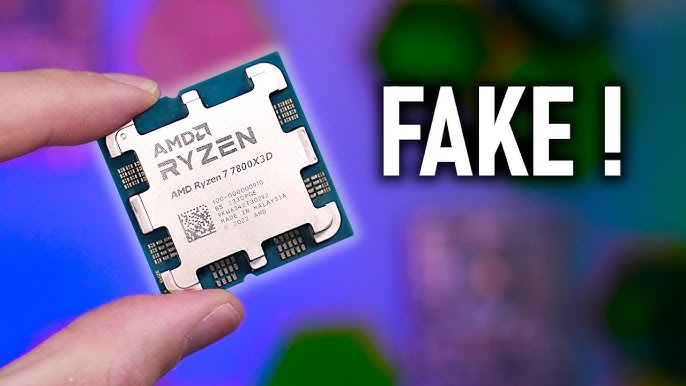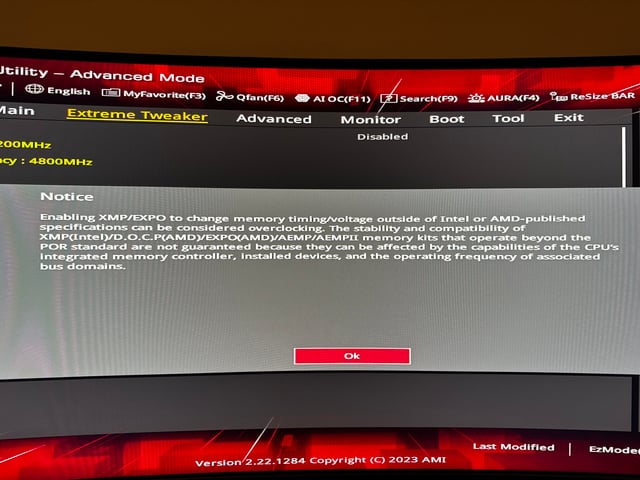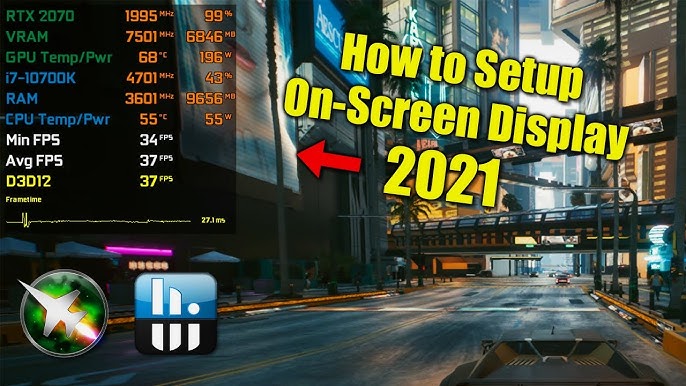AMD Ryzen 7 7800X3D Review: The Undisputed Gaming King?

The AMD Ryzen 7 7800X3D has been generating a lot of buzz in the PC gaming community, and for good reason. This CPU promises to deliver top-tier gaming performance thanks to its innovative 3D V-Cache technology. But does it live up to the hype? In this review, we'll dive deep into the 7800X3D, putting it through a rigorous suite of tests to determine if it's truly the gaming champion it's touted to be. We'll be examining its performance in popular games, exploring the impact of Precision Boost Overdrive (PBO) tuning, and comparing it to the competition, specifically the Intel Core i7-13700K. Get ready for a data-driven analysis that cuts through the marketing fluff and provides the insights you need to make an informed decision.
Build Quality and Design
The Ryzen 7 7800X3D is a sleek and modern-looking CPU, adhering to AMD's current design language. While the aesthetics of a CPU are hardly a primary concern for most gamers, the 7800X3D's physical design is practical. It utilizes the AM5 socket, which requires a compatible motherboard (like the ASUS ROG Crosshair X670E Hero we used in our testing). Cooler compatibility is also a key consideration. The 7800X3D doesn’t ship with a stock cooler, necessitating a separate purchase. Thankfully, it supports a wide range of coolers, from high-end air coolers to liquid AIOs.
Test Bench Setup
To ensure consistent and reliable results, we built a high-end test bench designed to minimize bottlenecks and accurately reflect the CPU's performance:
- CPU: AMD Ryzen 7 7800X3D
- Motherboard: ASUS ROG Crosshair X670E Hero (BIOS updated to the latest version)
- RAM: G.Skill Trident Z5 Neo 32GB (2x16GB) DDR5-6000 CL30 (running at XMP profile)
- CPU Coolers: Noctua NH-D15 (air cooler, fans at maximum RPM) and Corsair iCUE H150i Elite LCD (AIO liquid cooler, balanced profile). Ambient room temperature: 22-24°C.
- GPU: NVIDIA GeForce RTX 4080
- SSD: 2TB NVMe PCIe Gen4 SSD
- PSU: 1000W 80+ Gold
- Operating System: Windows 11 64-bit (latest updates, 'Game Mode' enabled)
- Monitoring Software: HWiNFO64 and CapFrameX

Performance
We subjected the 7800X3D to a battery of gaming benchmarks to assess its real-world performance. Each test was run three times, and the results were averaged to ensure accuracy. We recorded average FPS, 1% low FPS (using CapFrameX), and CPU data via HWiNFO64.
Cyberpunk 2077
- Settings: Ultra, Overdrive ray tracing preset (DLSS Frame Generation enabled and disabled), 1440p and 1080p.
Cyberpunk 2077 is a notoriously demanding game, pushing CPUs and GPUs to their limits. The 7800X3D showed impressive results here, especially at 1080p, where it consistently delivered high frame rates. DLSS Frame Generation provided a significant boost, but even without it, the 7800X3D held its own. We observed a noticeable improvement in 1% lows compared to other CPUs we've tested, indicating a smoother and more consistent gaming experience.

Starfield
- Settings: Ultra, 1440p and 1080p.
Starfield, with its vast open worlds and complex environments, is another CPU-intensive title. This is where the 7800X3D's 3D V-Cache truly shines. In densely populated areas like New Atlantis, the 7800X3D exhibited significantly higher frame rates and smoother performance compared to CPUs without this technology. The increased cache allows the CPU to quickly access frequently used data, reducing stuttering and improving overall responsiveness.
Valorant
- Settings: Low, maximum refresh rate, 1080p.
Valorant, being a competitive title, benefits from high frame rates and low latency. We tested at 1080p with low settings to maximize the CPU's frame rate capabilities. The 7800X3D delivered exceptional results, consistently pushing frame rates well above what's needed for even the highest refresh rate monitors. This ensures a fluid and responsive gaming experience, crucial for competitive play.
PBO Tuning
We explored Precision Boost Overdrive (PBO) tuning to see if we could squeeze even more performance out of the 7800X3D. Using Ryzen Master, we experimented with different PPT, TDC, and EDC limits. Increasing the PPT limit to 140W resulted in a slight performance gain in some games, but also led to higher temperatures. We ultimately settled on a more conservative PBO profile that provided a balance between performance and thermals, keeping temperatures below 90°C under sustained load.

Cooler Performance: Noctua NH-D15 vs. Corsair iCUE H150i Elite LCD
We tested the 7800X3D with both a high-end air cooler (Noctua NH-D15) and an AIO liquid cooler (Corsair iCUE H150i Elite LCD) to assess their cooling capabilities. The Corsair AIO offered slightly better temperatures, especially under sustained load, but the Noctua NH-D15 performed admirably, proving that you don't necessarily need liquid cooling to keep the 7800X3D running optimally. The difference in temperatures was around 3-5°C in most scenarios.

Comparison: Ryzen 7 7800X3D vs. Intel Core i7-13700K
To provide a comprehensive comparison, we pitted the 7800X3D against the Intel Core i7-13700K (stock settings) using the same RAM and, where possible, the same motherboard (or an equivalent Z790 board).
In Cyberpunk 2077, the 7800X3D and i7-13700K traded blows, with the i7-13700K sometimes edging out the 7800X3D in average FPS, but the 7800X3D maintaining slightly better 1% lows. However, in Starfield, the 7800X3D consistently outperformed the i7-13700K, showcasing the advantage of its 3D V-Cache. In Valorant, both CPUs delivered incredibly high frame rates, but the 7800X3D generally held a slight lead.
Power consumption was a key differentiator. The 7800X3D consumed significantly less power than the i7-13700K, resulting in lower operating temperatures. This makes the 7800X3D an attractive option for gamers who prioritize efficiency.

Value for Money
The Ryzen 7 7800X3D occupies a sweet spot in terms of price and performance. While it's not the cheapest CPU on the market, its exceptional gaming performance, particularly in titles that benefit from 3D V-Cache, makes it a worthwhile investment for serious gamers. When considering the total system cost (motherboard, RAM), the AM5 platform is competitive with Intel's offerings. Compared to the i7-13700K, the 7800X3D offers similar or better gaming performance in many scenarios, with the added benefit of lower power consumption.
Gaming Experience
Beyond the raw benchmark numbers, the 7800X3D provides a noticeably smoother and more responsive gaming experience. Frame drops are less frequent, and the overall feel is more fluid. In competitive titles like Valorant, the high frame rates translate to reduced input lag and improved responsiveness, giving you a competitive edge. Even in demanding games like Cyberpunk 2077, the 7800X3D maintains a consistent frame rate, preventing jarring stutters and ensuring a more enjoyable experience.

Strengths and Weaknesses
Strengths:
- Exceptional gaming performance, especially in titles that utilize 3D V-Cache.
- Lower power consumption and operating temperatures compared to the i7-13700K.
- Smooth and responsive gaming experience.
- Strong performance in competitive titles.
Weaknesses:
- Not the cheapest CPU option.
- Requires a separate cooler purchase.
- Performance gains from PBO tuning are relatively minor.
Conclusion
The AMD Ryzen 7 7800X3D is a powerhouse CPU that lives up to its reputation as a top-tier gaming processor. Its innovative 3D V-Cache technology provides a significant advantage in many games, resulting in higher frame rates, smoother performance, and a more responsive gaming experience. While it may not be the absolute best choice for every workload (content creation, for example), for pure gaming performance, the 7800X3D is difficult to beat. If you're a serious gamer looking for the best possible performance without breaking the bank, the Ryzen 7 7800X3D is an excellent choice.